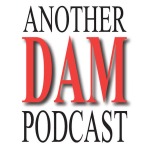Here are the questions asked:
Who are you and what do you do?
How are you involved with Digital Asset Management?
What are the biggest challenges and successes you’ve seen with Digital Asset Management?
What advice would you like to share with DAM professionals and people aspiring to become DAM professionals?
Transcript
Henrik de Gyor 0:00
This is Another DAM Podcast about Digital Asset Management. I’m Henrik de Gyor.
Who are you and what do you do?
Heather Hedden 0:07
My name is Heather Hedden, and I’m a Taxonomist. I design, create and edit taxonomies, which are structured, controlled vocabularies of terms or concepts used to tag, manage and retrieve content, and thus play an important role in metadata.
I’ve been a Taxonomist for over 25 years. This has included working both in information management roles and companies and as a consultant externally, both as an employee and self-employed.
For the past two years, I have been employed by a Taxonomy and Ontology management software vendor, Semantic Web company, whose product is called PoolParty, whereby I help our customers with their Taxonomy and Ontology products. I also teach taxonomy creation, through online and in-person workshops, both independently and through conferences or other organizations.
Finally, I am an author of a book about taxonomies and how to create them called The Accidental Taxonomist, which has just been revised for its third edition, which came out now in November 2022. I also author a blog called The Accidental Taxonomist.
Henrik de Gyor 1:22
How are you involved with Digital Asset Management?
Heather Hedden 1:27
I’ve been involved with a number of Digital Asset Management projects as a Taxonomist. Some of the past consulting projects for which I have created taxonomies included a photo editor and graphic design maker web application available to buy by subscription, which included its own stock photos, drawings, icons, and animations all needed to be tagged with a taxonomy. I did a consulting project for a hotel company, which included general marketing images for its websites, and images for specific hotel properties. And a project for our business information publisher, which had a large collection of short audio recordings from business leaders providing advice. That’s just some of them.
I also in my taxonomy training courses, I have had participants involved in Digital Asset Management. For example, in early 2020, I gave a two-day on-site training to the photo archivists of the US Senate House of Representatives and Architect of the Capitol. That means involving the building of the Capitol altogether,
Henrik de Gyor 2:35
What are the biggest challenges and successes you’ve seen with Digital Asset Management?
Heather Hedden 2:40
A continued challenge us in tagging image assets. For text-based content, text analytics-based auto-tagging has become common, but nontext content remains a challenge for tagging, audio and video can be transcribed and the transcriptions can then be text mined, but images remain a challenge. So captions and other manually added metadata is important.
Another challenge is in the issue of content silos. There is increasing interest in the fields of data and content management to break down silos and eliminate the use of so many different content management systems in an organization. But Digital Asset Management systems are optimized for the needs of DAM and it’s not practical to manage digital assets in a generic content management system. So the focus needs to shift from breaking down silos to bridging them.
As for successes, I think it’s been the wider recognition of the importance of Digital Asset Management in all industries, and organizations of all sizes, not just large media-producing companies.
Henrik de Gyor 3:50
What advice would you like to share with DAM professionals and people aspiring to become DAM professionals?
Heather Hedden 3:55
I advise to combine Digital Asset Management with another field or skills, such as taxonomy creation, or knowledge management or content strategy. Subject matter expertise is also good to have. And I recommend to think broadly to be open to work in any industry and not just those traditionally involved in digital, and media assets.
Finally, when it comes to specific implementations and projects, it’s important to consider metadata and taxonomy for a wider content use in an organization and not just the metadata and taxonomy specific for digital asset management.
Henrik de Gyor 4:33
Thank you. If you have any comments or questions, please feel free to email me at anotherdamblog@gmail.com. For more podcasts like this, visit anotherdampodcast.com. Thanks again.
Listen to Another DAM Podcast on Apple Podcasts, AudioBoom, CastBox, Google Podcasts, RadioPublic, RSS, Spotify, TuneIn, and more
Need Digital Asset Management advice and assistance?
Another DAM Consultancy can help. Schedule a call today

